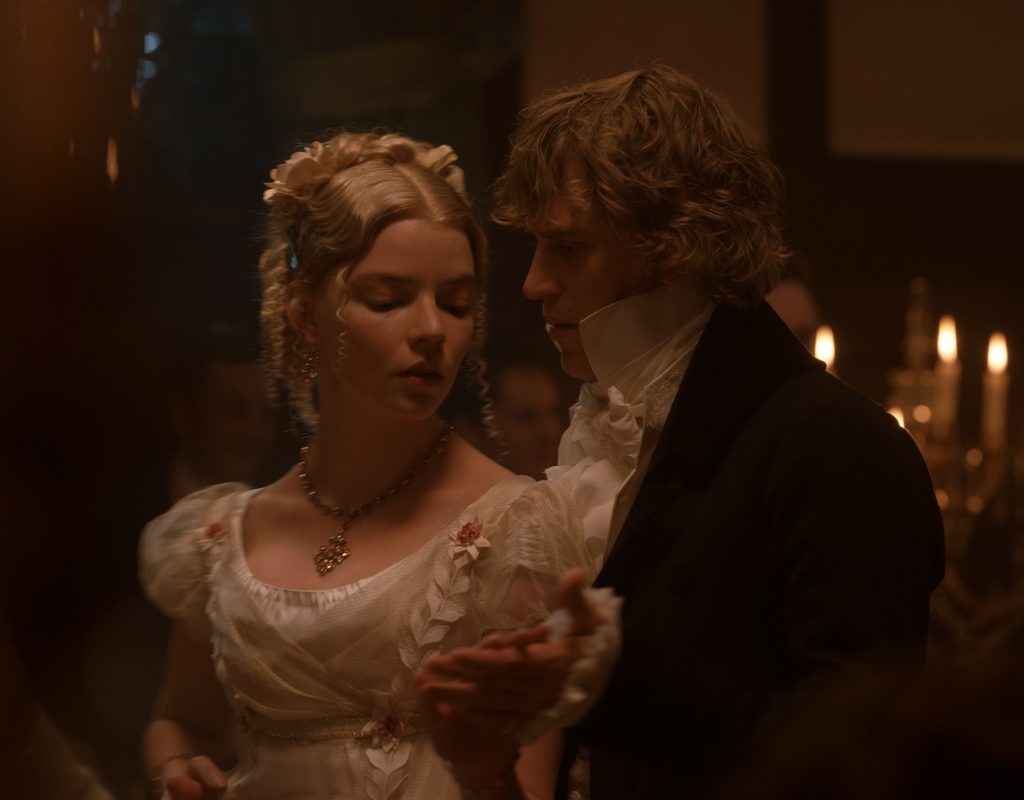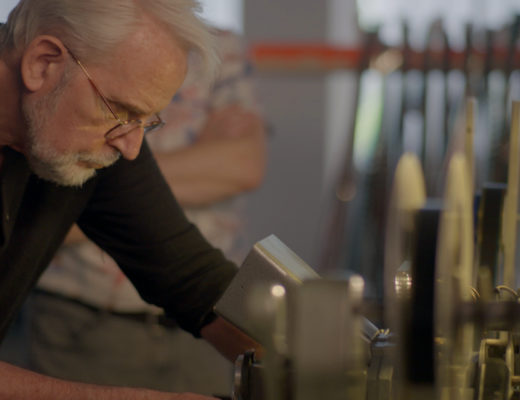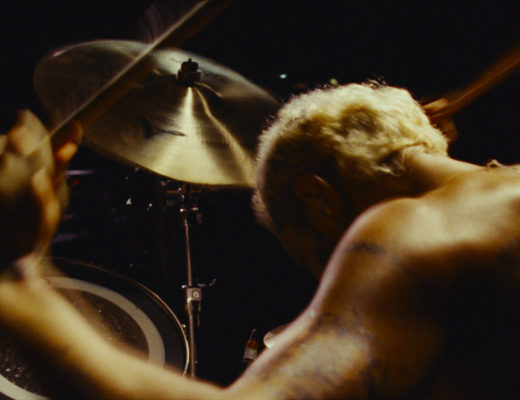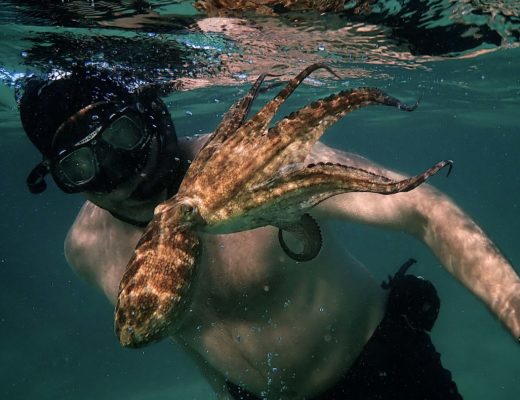Nick Emerson has edited TV, like The Life and Adventures of Nick Nickleby, and feature films, including Starred Up, The Hallow, Lady Macbeth, Film Stars Don’t Die in Liverpool and Greta.
He has also edited documentaries, including Sky Ladder: The Art of Cai Guo-Qiang.
In this interview, we discuss his editing of the film Emma.
This interview is available as a podcast.
(This interview was transcribed with SpeedScriber. Thanks to Martin Baker at Digital Heaven)
HULLFISH: Let’s talk about the “With Whom Will You Dance” scene. I thought that had some interesting coverage and I wanted to talk about why you chose to go to your close-ups at certain times. Why you chose to be on certain people at certain times — some of those decisions.
EMERSON: It’s a scene that we had actually tried a number of different ways. One way was actually to start the scene in those tighter shots because on that scene, we had a two-shot from behind that sort of pushed into the actors, and then we had those very, very big close-ups.
At one point we had decided to start on the closeups and then go out, but it kind of blew this beautiful shot which we liked, which had this sort of tension pushing into the actors and we wanted to hold that as long as was possible.
At one point we had started it on the close up of Emma because we wanted to get a sense of being in her point of view from the get-go. But we decided that ultimately it was more useful to be in a more neutral point of view for that scene because it’s at a point where actually both of those characters are beginning to change. He is beginning to realize that he can’t just fly off the handle and be a very patronizing man towards her. He’s seen something in her and has realized that he can’t be that way all the time so he’s growing at the same time that she has realized that she has made yet another mistake.
We wanted to be inside both of their heads because it’s kind of a turning point of sorts in the film.
HULLFISH: That makes me think that the decision to start in the closeups happened when you were cutting the scenes by themselves, but then when you learned the context of the whole story and saw the arc of the story play out, then you switched it to the neutral representation.
EMERSON: I think it the assembly, I did start in the two-shot, but we did experiment with getting greater access to her at the beginning of the scene. There’s also a little bit of dialogue cut from that scene as well.
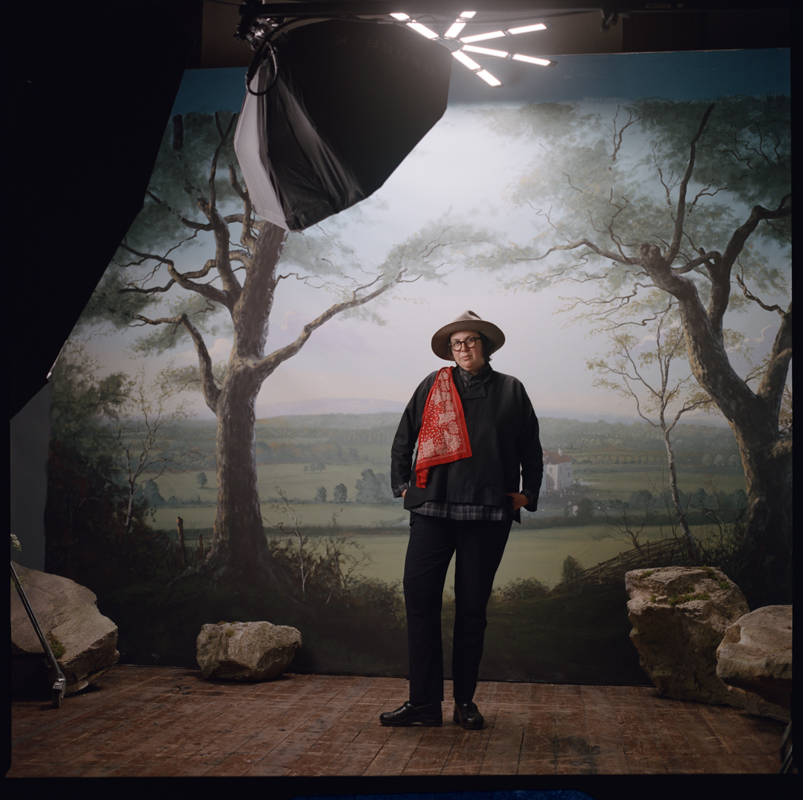
I think in the assembly I had started off that way because I was so impressed with that shot. It’s a scene that you’re not going to be able to make too many cuts in because we only had those two singles and as you can see, they’re very close. They’re quite aggressive when you do cut to them. We did have to sort of pick our moments for those. And also because there’s another character that enters.
It stayed like that for a while and then we decided, “Oh God! Are we missing a little bit of access to her at this moment?” So we decided let’s try with the close-ups and where we ended up, I think is good.
HULLFISH: The other thing I was thinking of with that shot — the way you used it — when you are looking through dailies it’s kind of a special shot that you say, “Oh, I gotta use this.” This is obviously the way that the director maybe wants me to get into the scene.
EMERSON: Yeah. Absolutely. Although I try — certainly during the assembly stage or during the production stages — I try not to second-guess.
I started off in documentary film and that has really informed how I approach scripted narrative. I very much watch everything and respond to the material as it comes in almost like a documentary.
I build little palettes of the most interesting parts of the scene and then I construct a scene around that. But that was definitely one that is an establishing shot. You can see that they’ve moved to a different location. But it’s also that thing of seeing their full bodies in those costumes and in the frame together was very exciting.
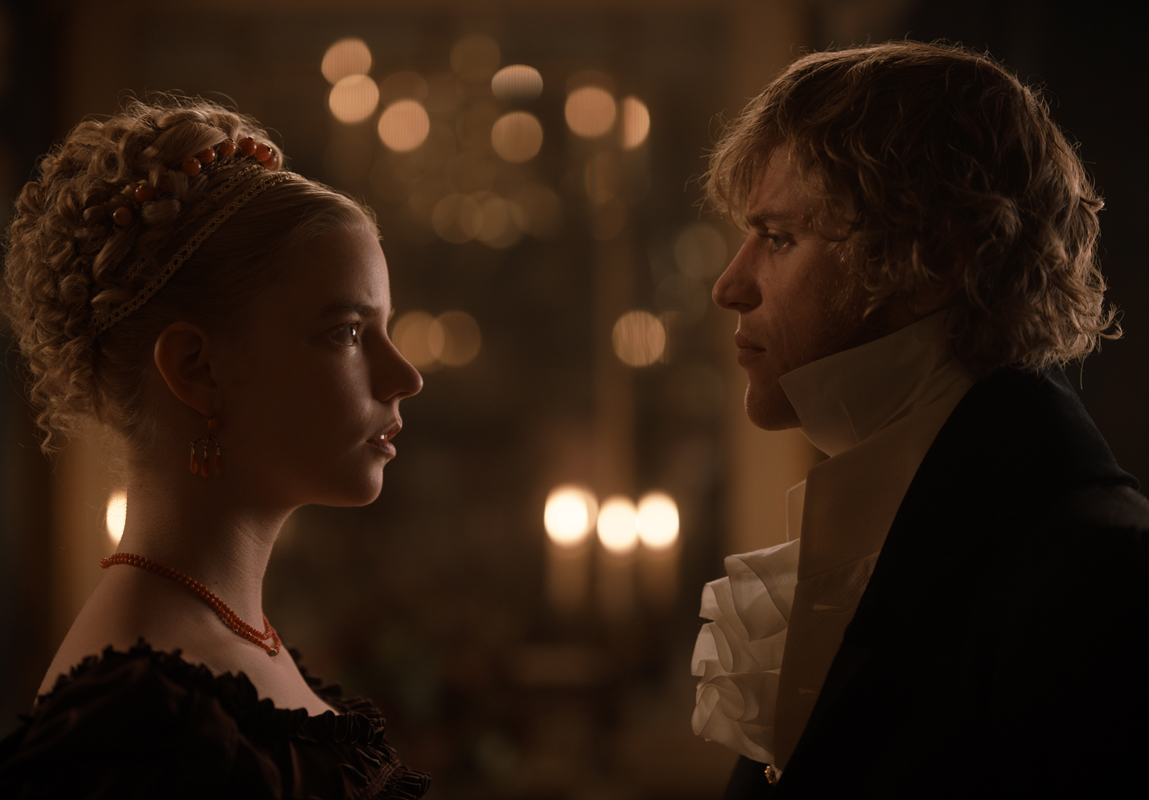
I don’t want to misquote Hitchcock but I think he had always said that if you’re making a love scene or a romantic scene you need to see the characters in the same frame at the same moment. There is definitely a sense in those single shots that they’re separate because they’re not in the frame together, so it’s always useful I think in those sorts of scenes to see them in the frame together.
HULLFISH: Seeing some of the geography of where people are in relationship to each other and the location around them?
EMERSON: Yeah. Also, just the tension between them and their physical relationship to one another, because especially in that time period that was so important in terms of what they were allowed and what they were not allowed to do.
Not often would young men and women be allowed to stand alone like that. So it does have that sort of sense of high school kids having a private conversation.
HULLFISH: You needed to respect the sense of the era and the sense of the culture at that moment. How much was that a part of your conversation with the director? Talk to me a little bit about any kind of conversation you had with the director.
EMERSON: Certainly for an audience, you have to train your ear to hear that kind of speaking because it can be quite wordy. I am pleased with the way the script was written. It was quite faithful in terms of the dialogue to the Jane Austen text.
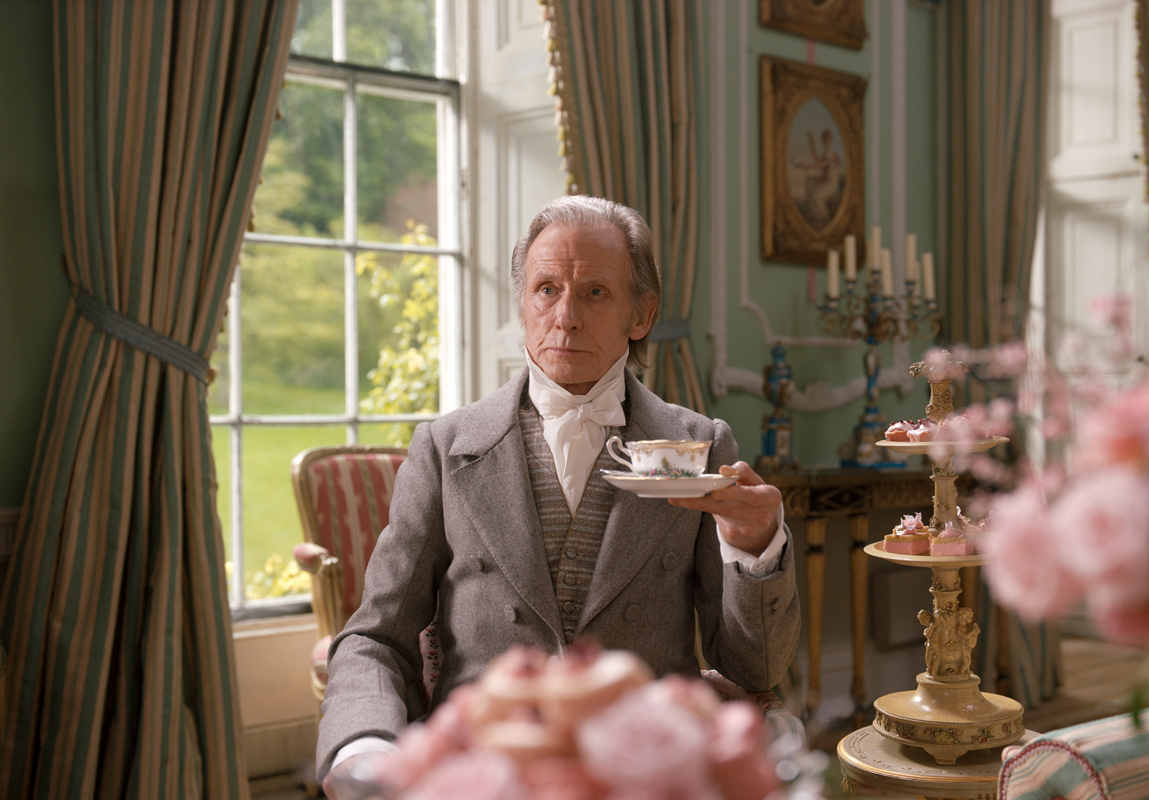
There’s always a temptation to simplify that dialogue and pull a lot of dialogue out and to make it cleaner and more understandable. But what you soon begin to realize is that for the audience, so much is being told through the visuals and is contained within the actors’ performances that if somebody doesn’t pick up on every single nuance of the language — whilst many people are familiar with the text will do — they’re going to understand the scene from a dramatic point of view and what is going on.
That was one thing we definitely discussed: not trying to oversimplify that language and try to water that down. There were times when we had to do that, but we tried to maintain that complexity.
In terms of the visuals there were definitely lots of things that Autumn, the director, and the cinematographer did in terms of the framing and in terms of how people existed together in those places and the etiquette and how they moved.
The actors were very much skilled in terms of how they moved. One thing that you might be interested in is in terms of the sound design: none of the shoes that the women were wearing would have made any noise. The temptation is — as I’m sure you know — is for sound to add a lot of Foley, and they did add some things but it was just very soft fabric because the women glided everywhere and they were in this soft fabric so there weren’t that many footsteps that were added to those moments, apart from the men.
The man, at times, did wear almost slippers inside as well, so all that stuff was kind of muted down. There were definitely conversations about that.
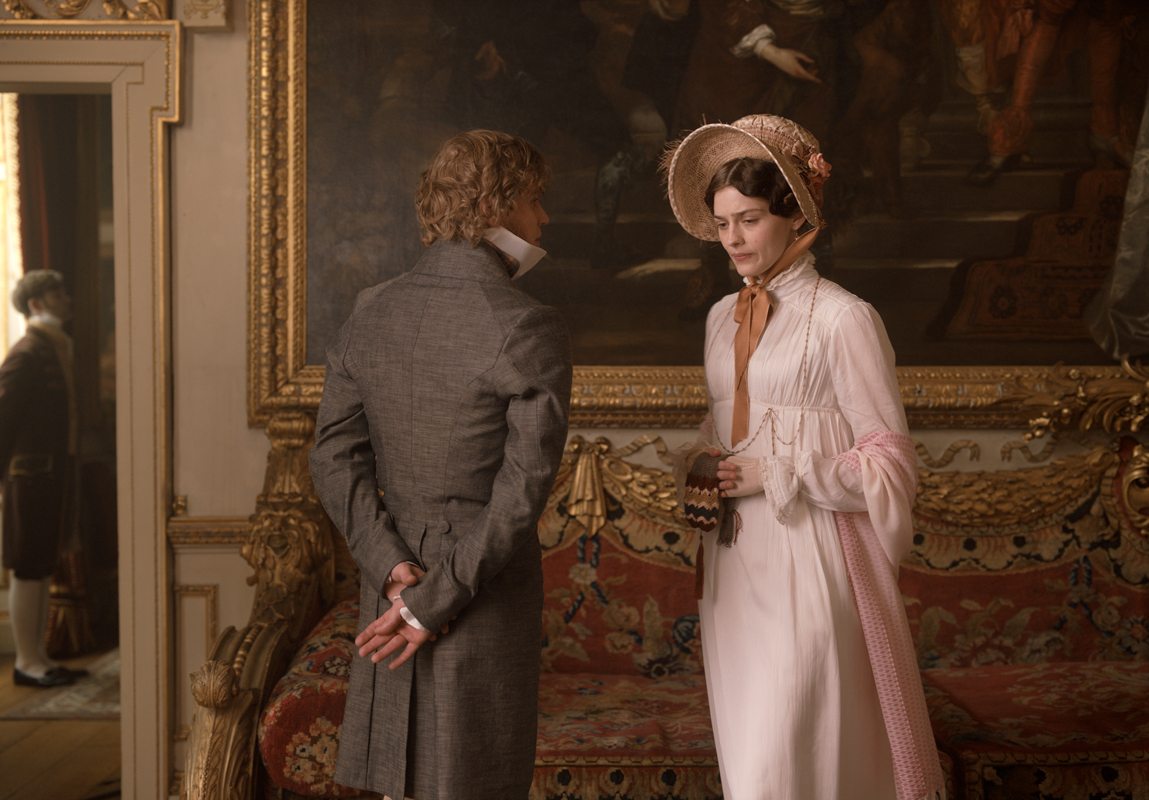
The other aspect was how much of the world do you want to explain in terms of the etiquette for an audience and what they need to understand. We kind of took the view that people will come to the film with a certain degree of knowledge about that system of class that existed in England at that time.
They understand that there were people who had wealth and they didn’t have much to do to get that wealth. It was just inherited and that was the way it was and if you were fortunate enough to be born into it like Emma is, you had very little to trouble you.
At the beginning of the film, there’s a quote from Austen that says, “She had lived twenty-one years with very little to distress or vex her.” And that’s the way she went about her life. She basically starts to meddle in things because she’s bored.
HULLFISH: Did you read the book before you either edited it or were hired?
EMERSON: No I didn’t. And I do that deliberately. I read it at school years ago but I didn’t reread it because I think that it’s very easy to get tied up in the novel — and at the end of the day you’re making a film.
I like to respond to things as they appear because if the scene is working and it’s telling the story then that’s a fresh reaction to that. Having the prejudice of the book sort of whispering in your ear or being afraid to cut a line of dialogue because it’s a famous line in the book…
You gotta focus on telling the story for the movie.
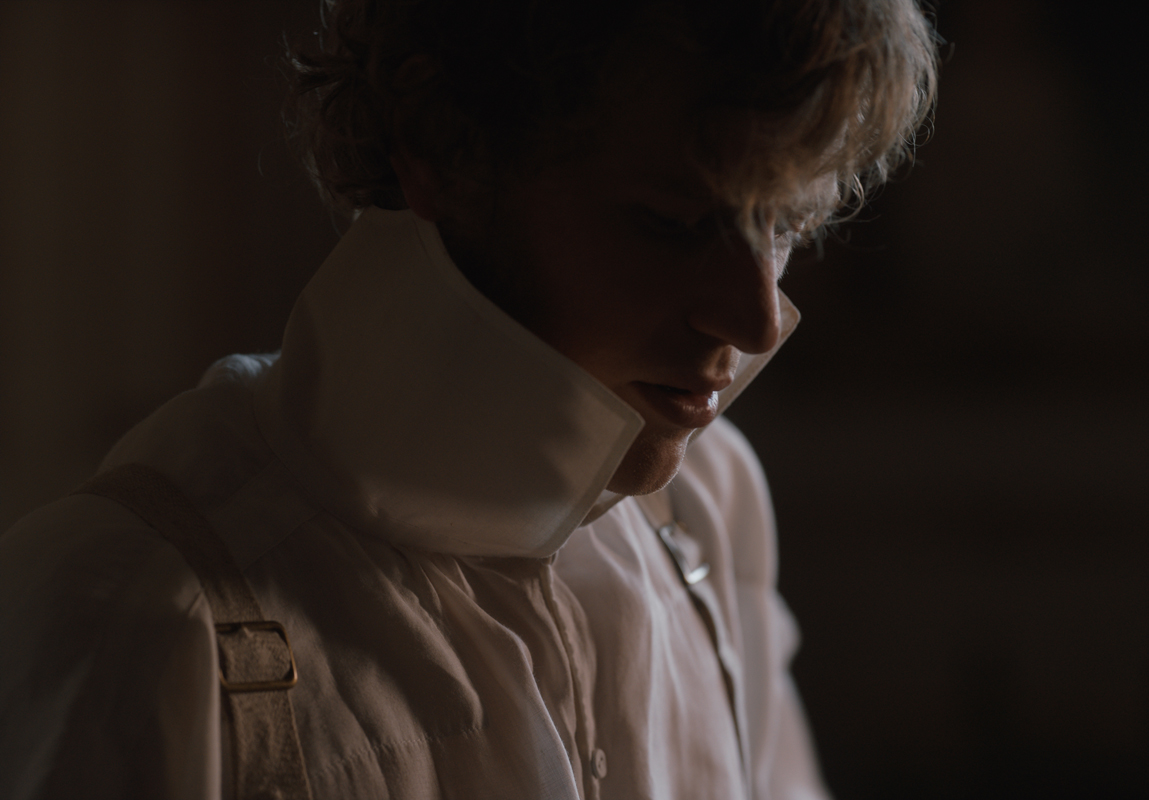
HULLFISH: That sounds like it goes along with your idea of coming from documentary and just saying, “Hey. I got the footage that I have to work with.”
EMERSON: Absolutely. You want to make sure that the fans of Jane Austen would not necessarily be disappointed, but you can’t be a slave to those things.
HULLFISH: I just interviewed the Call of the Wild editors last week. That’s another adaptation and they are similar to you. Call of the Wild in the United States is required reading in high school, so they read it in high school but not since then.
Is there any other way that you tried to steep yourself in the world? How did you deal with music? Were you listening to music of the era?
EMERSON: Yes. When I’m editing a film — at the assembly stage or during production — I try to leave music away from the film until as late as possible because I find that I can prejudice your cutting — as I’m sure you know — it can be used as a crutch to support something that isn’t quite working.
But in this instance — because the way the film was was photographed — and Autumn was very keen for this sort of clockwork choreography to take place in the film — so it lent itself to this sort of musicality.
I was adding music earlier than I usually might. But we were definitely listening to a lot of music of the period ahead and a lot of music actually that Jane Austen herself would have listened to which was very inspiring as well.
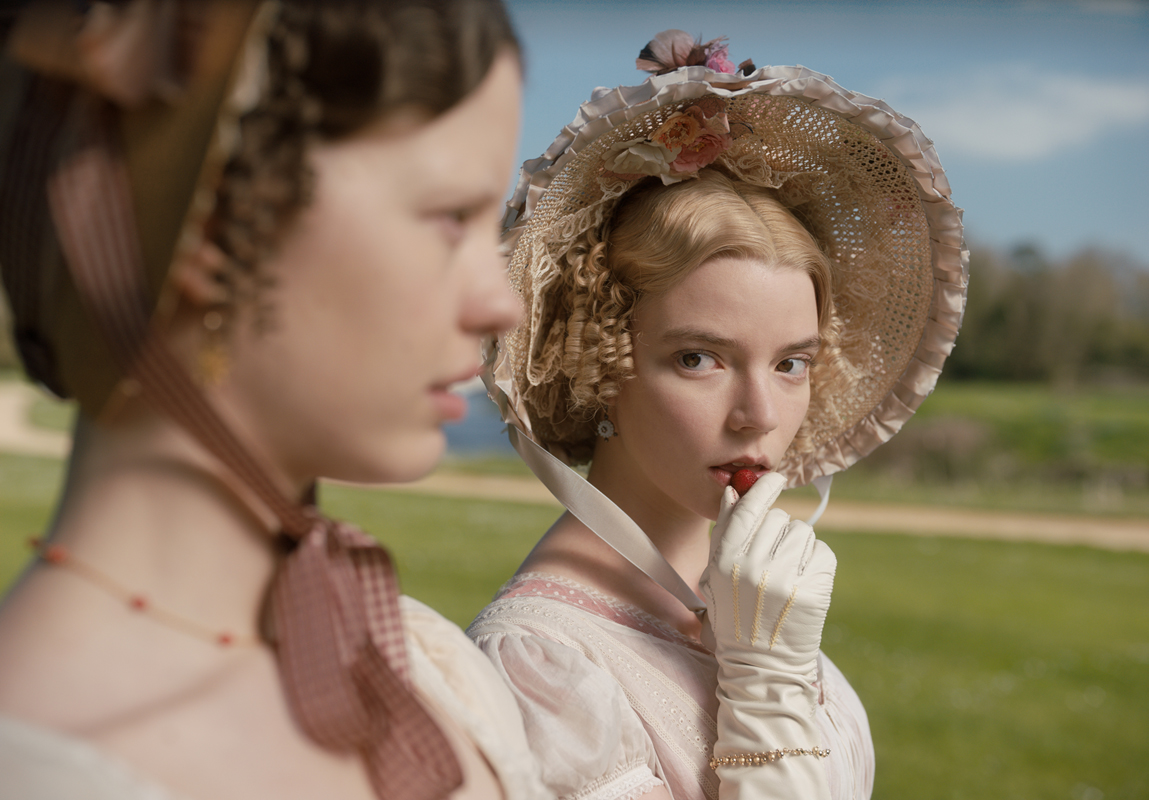
We also spoke about wanting to do something original — but not to go down the route of using contemporary, modern-day music. We did a little bit of that in terms of using folk tunes, but our reason for using folk tunes was that they were actually English folk music. It’s genetics started off in that period when Jane Austen was living so there is a sort of a lineage that goes through to the storytelling and the kind of vibe of those folk songs, so that sort of gave us permission that we thought we could use them in the film even though they’re not necessarily period accurate.
I immerse myself in the rushes of the film as it’s presented because the way I always feel about these things is that during the production period you’re scrambling around trying to control the mass of material and try to you know basically assess and see what’s going on and make sure that everybody is happy with what’s coming through.
But then at a certain point — after the shoot — I think the film starts to basically control you and tells you what it needs to be and it soon starts to reject things that are not right and through that process — and again, that comes very much from a documentary background — is trying to control all this material but then you start to expose the film and expose the story by cutting all this mass of material.
HULLFISH: A lot of people say that the film starts telling you what it needs to be.
EMERSON: Yeah. Absolutely. Sometimes I think that’s not necessarily in a very overt way. Sometimes it’s just a subconscious thing. It’s getting under your skin and follow your nose.
HULLFISH: You mentioned the clockwork choreography of the blocking. How did that affect the editing? Make it harder? Easier?
EMERSON: It makes it easier in some instances and then also it can box you into a corner. Maybe if you have to change the intention of a scene for whatever reason, sometimes that proves difficult. Other times it’s just this joy that you have these actors swimming through this scene in this wonderfully choreographed way. That old-school approach of designing a scene and designing the choreography and designing the blocking so that there aren’t a million different ways of cutting it.
HULLFISH: Were there some other scenes that you wanted to talk about?
EMERSON: We can talk about the carriage scene. That’s one of the first scenes that they actually shot on day one. And it’s a very key scene because Emma Taylor Joy’s character has realized that she has made a huge mistake. She has been trying to make this match between Mr. Elton and her friend but suddenly it has become apparent that he is interested in her. And so it’s this key moment where she realizes she’s made a huge mistake and her friend is going to be upset.
It’s a really good example of a very long dialogue scene where your choices about where you might decide to play something are key and we have this incredibly wonderful performance from Josh O’Connor who plays Mr. Elton, and he a lot of dialogue. He has more dialogue than her in that scene.
The temptation is just to look at him delivering this great performance but you have to ask: where does the drama lie in the scene? The drama lies within the scene and her realization that she has screwed up. I’m always asking myself where the drama lies and where does the story lie and that’s the story — her realization that she’s messed up.
You have to ultimately play a lot of it on her reactions and much of film editing is about watching characters receive information as opposed to seeing them speak. It’s always a fine balance because you want to see him speak as well but more often than not it’s more interesting to watch your protagonist absorb some key piece of information because it informs how the character is going to behave in the subsequent scenes.
It was actually shot on a sound stage. That scene was quite noisy with snow machines and things for the background. You have to put those things aside and not think there’s a problem just because you’re tired of listening to this background noise that has yet to be cleaned up properly. It takes a bit of practice to be able to put that away and not to think about those things.
HULLFISH: I’m sure the actors gave you great emotional moments and beats to play off of in your editing — like the example of the reaction shots you got in the carriage scene — but back in that period and culture it seems like they held their emotions closer. Did that make a difference in how you were trying to find performances?
EMERSON: There’s definitely a containment that was going on within the performances but at key moments they do have bigger bursts. The thing for me about actors is that so much of what’s going on is in the eyes. You know what I mean. That’s mainly what audiences are looking at. If the actor is just transmitting that thought and the camera is looking at them the audience will know — if they’re engaged in the story and everybody’s doing their jobs right. They will project onto that.
HULLFISH: Did you guys have discussions about tone and how to control it?
EMERSON: She wanted to almost have elements of screwball comedy in the film that harks back to the earlier films of the 50s and the 60s. With any film that you’re editing you just have to be careful the more humorous moments don’t overtake the story that you’re trying to tell and it’s very easy to be seduced by those things and think, “Oh this is a funny moment it must be in the film.” It’s about filtering out when it’s too much. Is the style or the tone of the film overtaking the drama of the moment? Is it trampling something key that we need to communicate?
I always follow the actors as well. I let them be my guide in terms of the tone. If they’re reading something into it that they think that it needs to be something, I’ll definitely explore that for the time being. It’s only when you look at the film as a whole and then you realize — those odd left turns or things that are tonally just not quite right — for me they always jump and I think, OK, we’re going to have to dial this down a little bit here or turn it up or it’s not funny enough.
You go with the rhythms of the film in that instance.
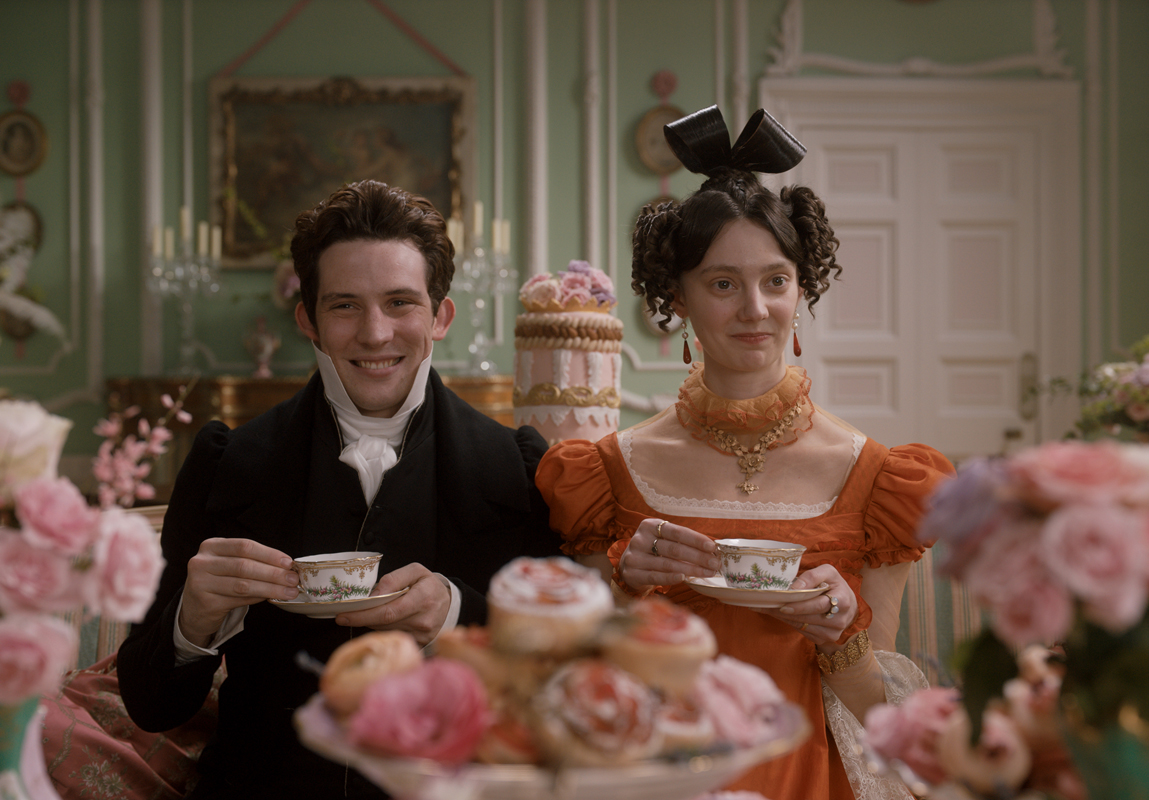
HULLFISH: But those are things that you have to wait for, right? You can’t be making those determinations while you’re cutting dailies. You’ve got to be waiting to decide those things with the director when you’ve got an assembly at least.
EMERSON: Absolutely. You definitely have to keep your eyes open for everything when you’re just doing assembly. I tend to just do one version of it and see how that plays. Generally, they obviously do have too much to everything and you just can’t possibly tell at that moment whether it’s right or not. It’s only till you see that the whole film in context.
And there was a lot of that in this film of dialing things down and turning them up at certain points and just being aware of trying to get a tonal balance that is acceptable to the audience. But at the same time, you don’t want to iron those things out. There is that temptation to iron things out and make everything flat. That’s something you have to be very wary.
We wanted to make something light and fun as well. So don’t want to iron all those bits out in service of the drama or the story.
HULLFISH: Can you think of specifics that you and the director talked about when you were watching some early version of the film where you realized that the tone needed a lift or needed to be darkened?
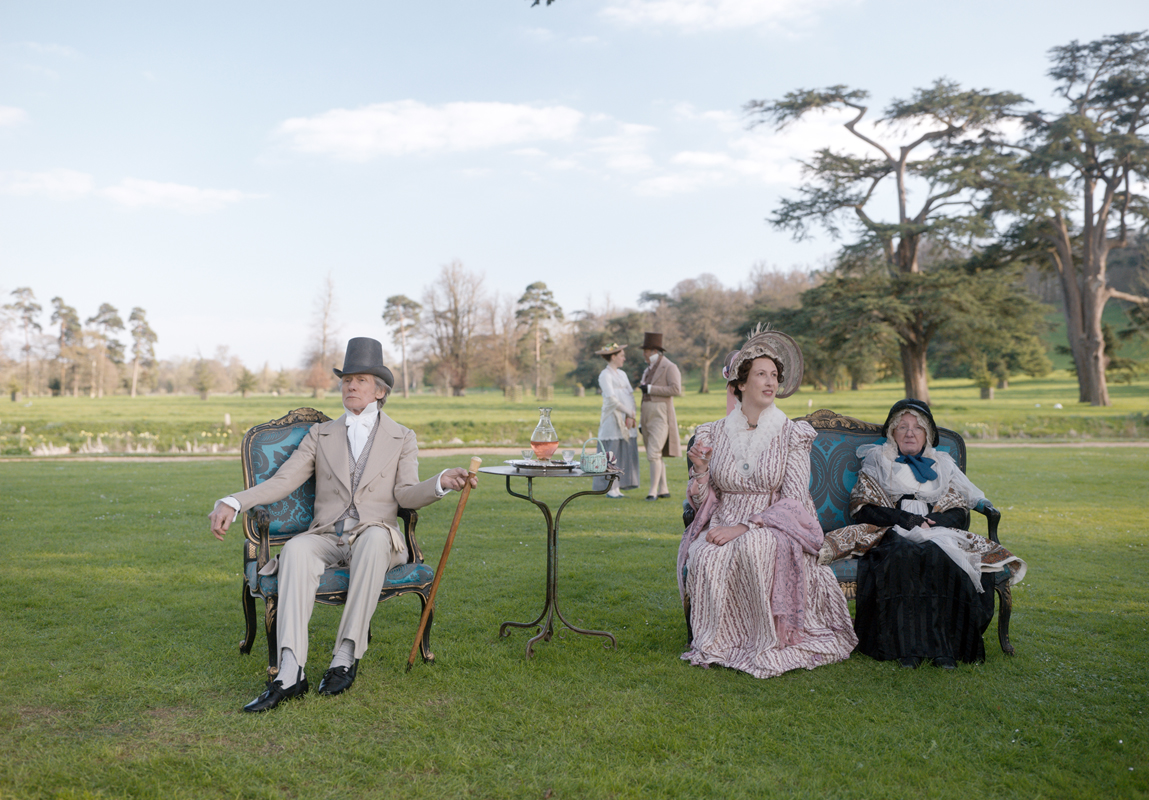
EMERSON: There were some moments at the beginning of the film — there was a church scene. It’s this classic thing at the beginning of the film of trying to get everybody grounded and establish who everybody is and what their dynamics are. And that scene was one where we definitely had to tone down some of the humor because there was a conversation between Emma and her father establishing another character — Mr. Frank Churchill — and it was very important that this information came across and we realized that there was an awful lot of other humorous bits going on in the church between other characters and other interjections that we just had to slightly dial down because in the first 15 minutes of the film you’re being bombarded with so many names, characters, and introductions that we really had to focus
it. That was definitely a moment where we had to turn down some of the more screwball comedy elements and just keep the narrative going and the storytelling being told so that those other moments didn’t become distracting.
In the carriage scene, we had a choice to make in terms of how aggressively Mr. Elton would respond to this sort of humiliation of being rejected by Emma. We had an immense range from Josh O’Connor in terms of how big or angry he went. We pared back some of the angry moments and just let him build to being angry as opposed to making it all one emotional level. We could have turned it up even further. That’s with all scenes. You’ve got to find a balance of what’s right.
HULLFISH: How long was that first assembly?
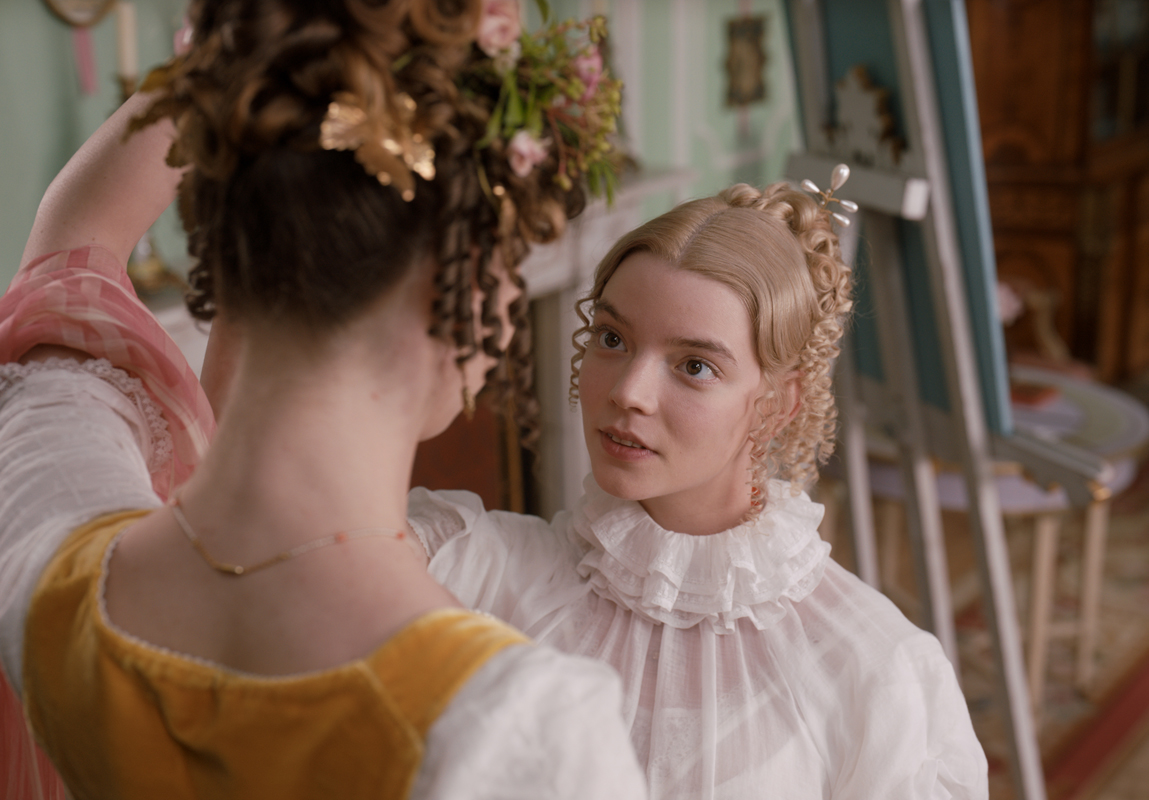
EMERSON: I think it was just over three hours, believe it or not. We ended up taking maybe an hour of the film out, or something like that. There were a few scenes that we took out, but a lot of it was taking dialogue out and tightening within the scenes that existed.
The film tells you what scenes ultimately need to go. They just start to feel redundant or aren’t advancing the story. It’s gotta be a story that flows and engages people.
HULLFISH: Sometimes it’s the great scenes that have to go.
EMERSON: There’s a David Fincher quote that you’re not finished with your film until you’ve cut your favorite shot out of it.
HULLFISH: Exactly.
EMERSON: It is so true. I try not to fall in love with scenes. I do fall in love with moments. Sam O’Steen, the editor, has a book called “Cut to the Chase.” He spoke about a hierarchy — film first, scene second, moment third. You’ve got to sacrifice the moment to save the scene and then you have to sacrifice the scene to make the film work.
That really stuck with me as a really useful thing to go by. Ultimately you gotta cut stuff out. I’m quite ruthless and sometimes it gets me in trouble, but I enjoy that. At a certain point — and I wouldn’t recommend doing this at the start of the process — sometimes it’s good to take something out and see what it does. It’s the only way that you’ll know if it needs to go back in or if a moment needs to go back in because it will scream to be let back in if it needs to be there.
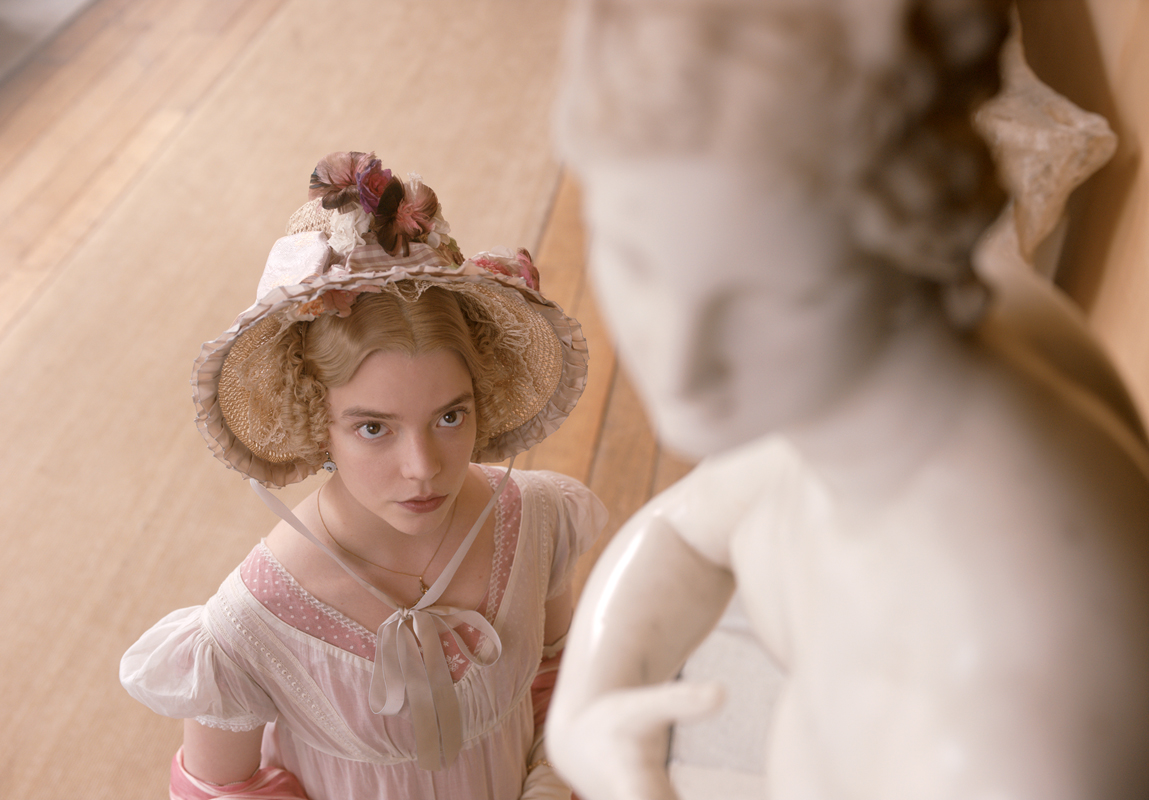
I don’t recommend doing that at the start of the process because you can damage a film quite quickly. My process is always — when you’re sitting there with that very long assembly — for the first couple of weeks anyway, is just to nibble at it. Try and uncover the film and expose it and see what’s there as opposed to going in very ruthlessly and taking things out.
I think there’s a time for that later on down the line, but certainly not in the beginning.
HULLFISH: Did you guys cut any scenes out that you put back in?
EMERSON; Yeah. There was definitely a scene that stayed out for quite a while. It was a scene between Mr. Knightley and Emma at Christmas. The reason why we decided to try taking it out — and it stayed out for a while — we just worried that it might have been a repetitive beat, but then we realized it sort of made the stuff around it feel a little bit frivolous or redundant.
There was a lot of great stuff in the sequence even without that scene, but we just realized that we needed to stay with those two characters. It was a scene where they have an argument across a dinner table. We’ve just seen them bicker. Do we need to see them bicker again so soon?
We slightly changed the scene in the cutting to make it feel less of a repeat.
HULLFISH; How did you make the leap from documentary to feature? And do you go back and forth?
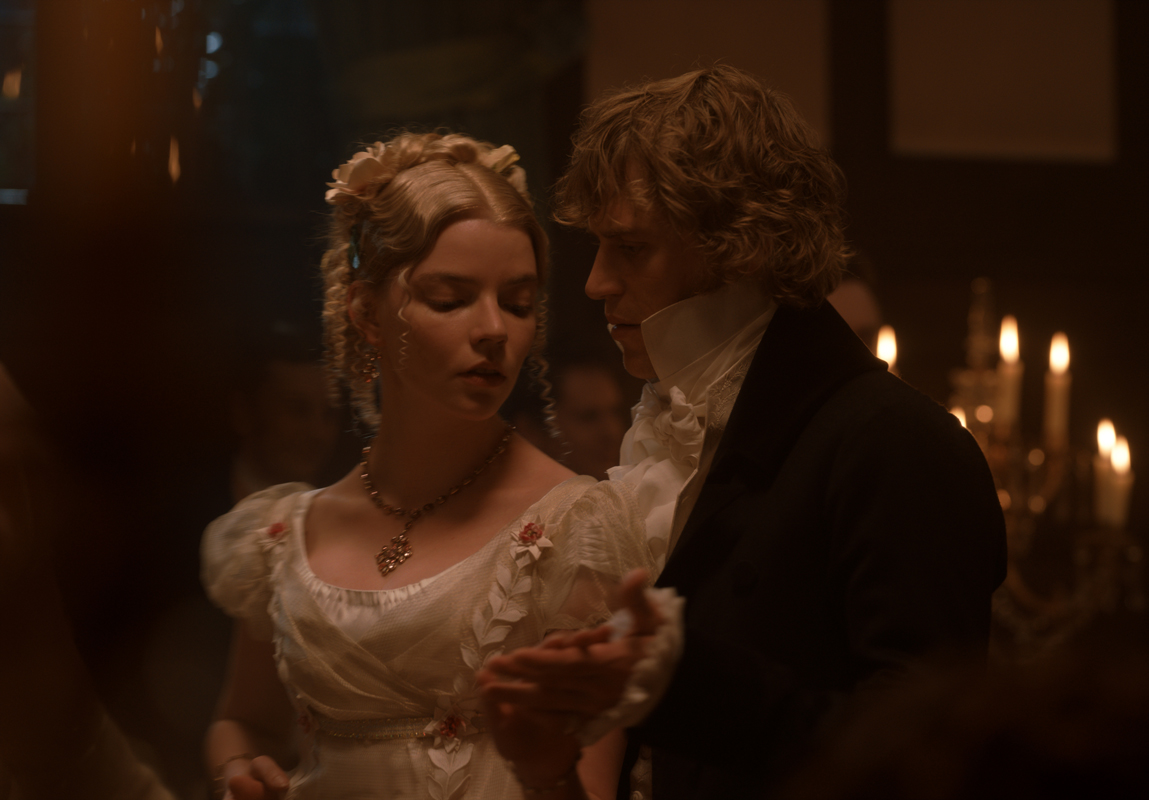
EMERSON: I have gone back. I did a film with Kevin MacDonald, a great fiction and documentary filmmaker. I went back to do a film with him because I had this opportunity. He wanted to meet and I was such an admirer of his documentary work that I couldn’t NOT take the meeting. I went back and did this film about a Chinese artist called Sky Ladder with him.
Making the transition was difficult because I was in Belfast and there was not a huge amount of narrative fiction scripted work going on, so I was very lucky that I was given an opportunity to cut a short film.
I was always interested in doing narrative films whilst I was cutting documentaries and I was given the opportunity to cut this short film and subsequently became friends with the directors: a woman called Lisa Barros D’Sa and a guy called Glenn Leyburn. Their short film did well and then they got their first feature film and then I was lucky enough to be asked to go on to that feature film.
They managed to persuade the producers to let me onto it. So I had done my first one but had to continue to do a lot of documentary work and a lot of television factual entertainment and I did another feature film and then another and then another and I was still doing documentaries up until around I guess feature film number six or something like that.
After that, I made the transition. I made a film here in London that sort of allowed me just to stay here and to continue to do feature films. It was another period film called Lady Macbeth and it did reasonably well here in terms of people enjoying that film and certainly got my editing name noticed a bit further afield than at home in Belfast and that was a big jumping point that I was able to move on with work here and actually getting an agent.
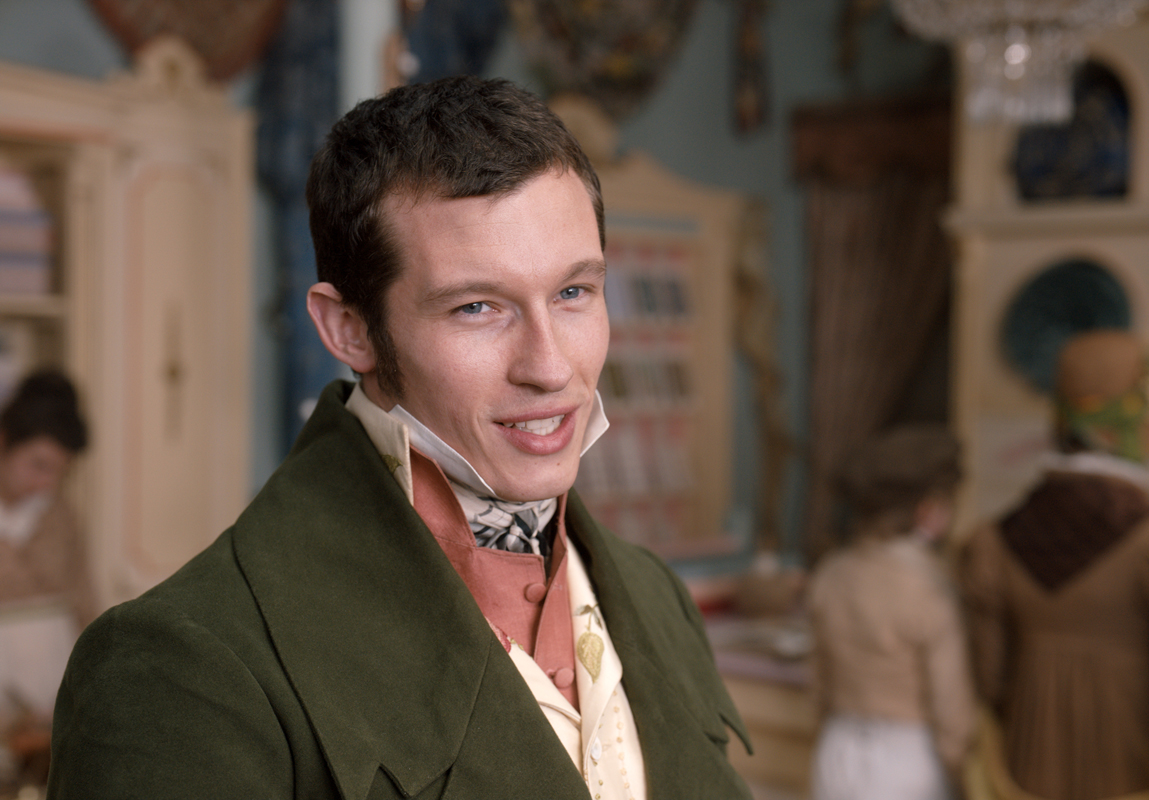
I was able to do that after I did the film Starred Up — which I co-edited with Jake Roberts — who I’m sure you know. Jake cut Hell or High water. We did Starred Up together and that was a British film that enough people saw that it enabled me to get an agent and they were actually very helpful getting me further work.
HULLFISH: Can you think of any other advantages or ways that your documentary work helped your narrative work?
EMERSON: It definitely trains you in storytelling. Often what would happen in a documentary film — you would have all this material and there would be no narrative that would be there. There would be a sense of an idea of a story that you wanted to tell but you’re drawing the narrative out of the material that is there and you’re telling a story from that material.
Obviously there’s a script with narrative, but as you know, once the script has been shot, that’s set aside and you have this lump of material that you’ve got to draw a story out of.
But also what it does is it teaches you to be a little bit more ruthless and to really interrogate it. Is this material really doing its job? And because you’re so used to doing that in documentary — where you discard so much — it gives you that ability to make a judgment and say, “It’s absolutely not necessary. It’s not working. We need to take it out of the film.” So it teaches you to be less worried about those sorts of things.
In documentary it’s very much a distillation of all these things. It’s like a fine sauce that gets reduced and reduced and reduced. That’s the way I treat scripted material as well.
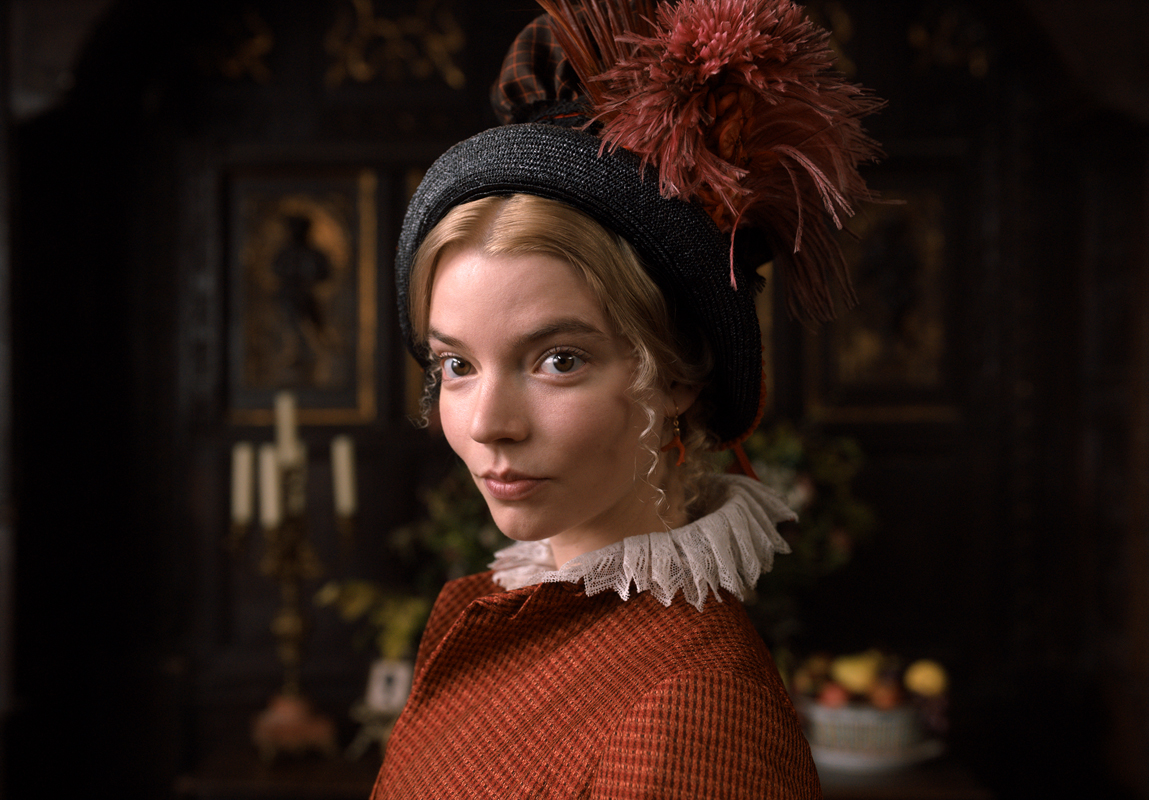
HULLFISH: What is your actual approach to starting to cut a narrative scene? You gave us some broad brush strokes earlier, but what are the details of the way you work?
EMERSON: I start with the first slate. Obviously the director has their selected takes but I only refer to that at a later date. I just open up the bin. I will see the different representative frames of each setup and I just start with the first setup of the first take and I watch it. I watch all the dailies. Sometimes that takes forever because I watch every frame.
Then I mark an in and an out if I find something that’s interesting or a line that is read a certain way and I just build this string-out of all these little bits. Then I just go into it.
For me, it’s almost like when you’re studying for an exam. You write things down and it helps you somehow remember them. From my work in documentary I’ve had this ability to be able to recall material, so if there’s a look that is interesting — because I’ve watched it and I’ve put it into this sequence of selects — it’ll come to the surface later on down the line. It’ll prod at me that there was something there.
So basically I build these selects — and sometimes they can be very long — and then from that, I’ll start to cut the scene. The two questions I will ask myself are: “What is the point of the scene?” and “Where does the drama lie?” I basically just start from that point and also point-of-view. Whose scene is it?
I’ll just start from there and then cut the scene. I’ll try not to revisit it too many times. The only time I revisit it is when I get a scene that’s maybe butting up against it. A scene that comes in and the join won’t quite work. I just build it scene by scene and sequence by sequence.
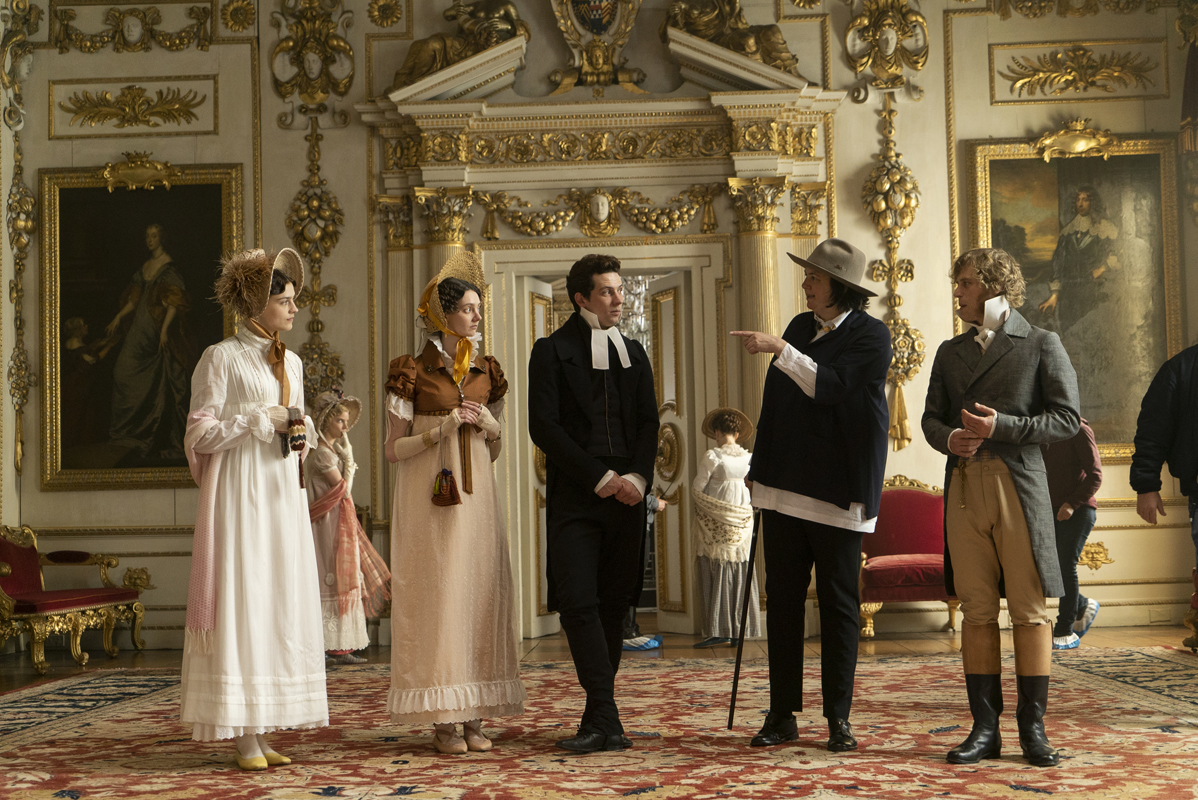
HULLFISH: Are you cutting the scene from your selects reel directly?
EMERSON: Yeah pretty much. I generally find the key moment of the scene and sort of start around there and I will build it around that and work out from there. Then if there is something that I’m not sure about, I will dive into the continuity notes and look at the selects and see what the director thought of a given moment which can be exciting. It’s nice when the director’s surprised. Like, “This is not how I intended the scene to be cut at all.” Sometimes that can be quite shocking but sometimes they really love that because it means they can see the scene very fresh and different from how they imagined.
There are also times when you look at a scene or you look at a bin and you see an elaborate shot that was designed to set up the scene and more often than not, you go for that. You don’t go for an antagonistic approach of just throwing it all up in the air for the sake of it.
HULLFISH: You talked about how sometimes when you juxtapose the two scenes together they don’t quite work or you need to find a different transition shot. How soon do you put any scenes together? As soon as you can?
EMERSON: As soon as I can. Absolutely. Because I like to be able to see how the sequences are building in terms of those transitions and especially during the production period because if I feel that there’s not enough connective tissue being shot that can help join these sequences together, that’s a surefire way of uncovering a problem.
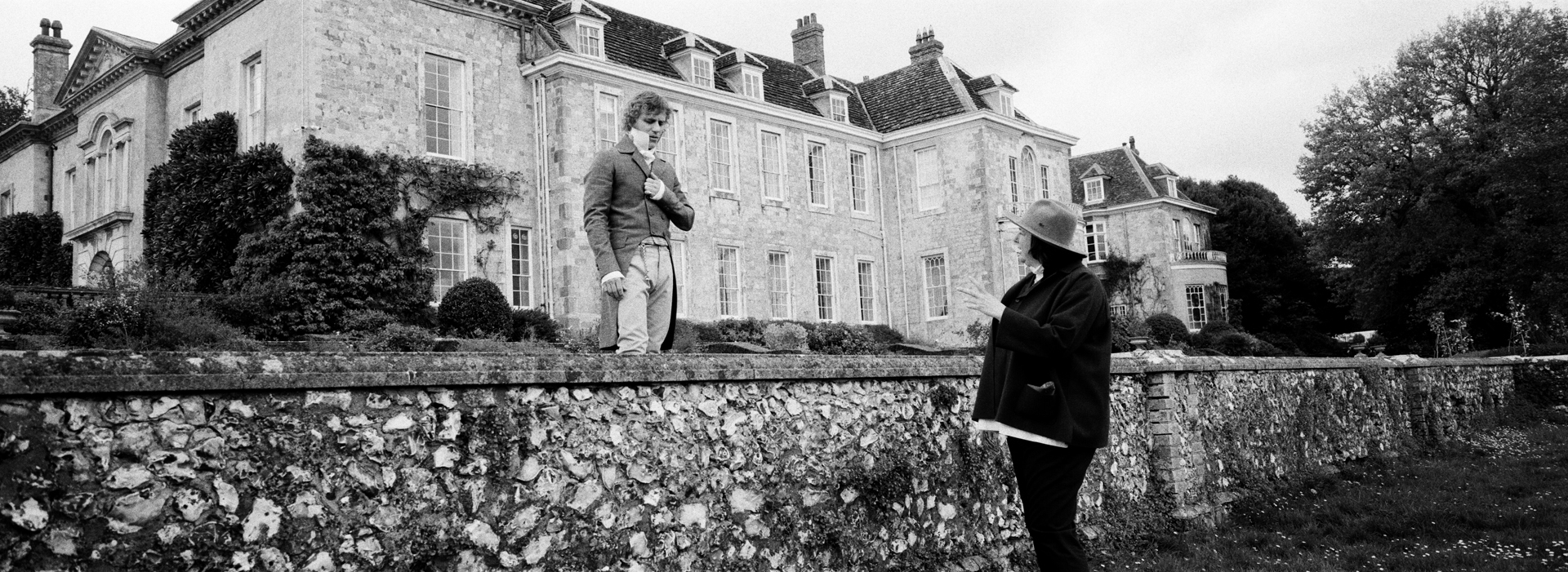
You start to put these scenes together and then you start to realize that there aren’t enough walking shots or “shoe leather” as they say in the business. More often than not, that gets cut out. But it’s important to realize when you might need some of this because it provides space for the rhythm of the storytelling.
So I put them together as quickly as I get two scenes together because during that production period you can feedback. Or there might be a strange continuity error or weather error or something that nobody has really been aware of it until you put the scenes together. Suddenly something doesn’t quite work or you have a thought like you notice that you need to see the exterior of a location and you notice that it’s not scripted to be shot. That’s when you pick up the phone and say, “I think it might be useful to get this character walking into this building.” It’s often stuff that gets cut out, but it can be vitally important to notice at that stage that it’s missing. You don’t want to have to get a pick-up shot later on down. It’s always better if you can have your actor in that space.
Putting those scenes together is useful to help with those joins, whether it’s a spatial awareness thing, but also emotionally as well. If something isn’t quite clicking and you can feel that there’s an emotional story beat that you can identify that’s not quite there, then that’s a conversation that you can have with the director and think well you know something’s a lot about this. Is this going to cause those issues later on when we’re trying to get the story to work?
HULLFISH: Thank you so much for sharing with everybody.
EMERSON: Thank you very much. I’ve been listening to your podcasts for some time so it’s great to be here.
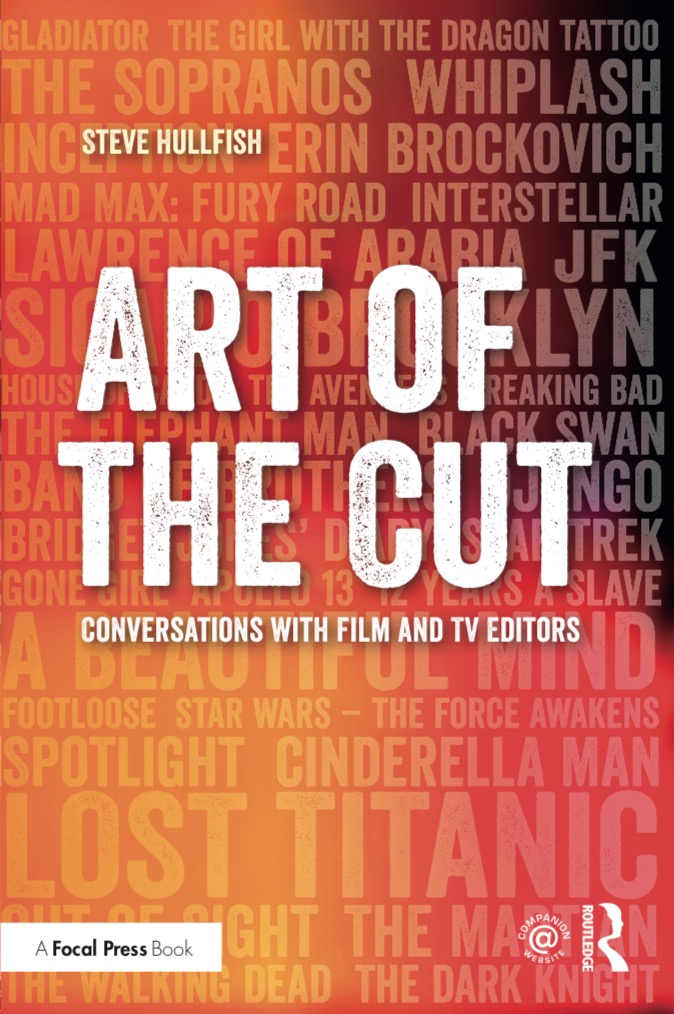
HULLFISH: Oh thank you very much. And now you’re part of the team.
To read more interviews in the Art of the Cut series, check out THIS LINK and follow me on Twitter @stevehullfish or on imdb.
The first 50 interviews in the series provided the material for the book, “Art of the Cut: Conversations with Film and TV Editors.” This is a unique book that breaks down interviews with many of the world’s best editors and organizes it into a virtual roundtable discussion centering on the topics editors care about. It is a powerful tool for experienced and aspiring editors alike. Cinemontage and CinemaEditor magazine both gave it rave reviews. No other book provides the breadth of opinion and experience. Combined, the editors featured in the book have edited for over 1,000 years on many of the most iconic, critically acclaimed and biggest box office hits in the history of cinema.

Filmtools
Filmmakers go-to destination for pre-production, production & post production equipment!
Shop Now